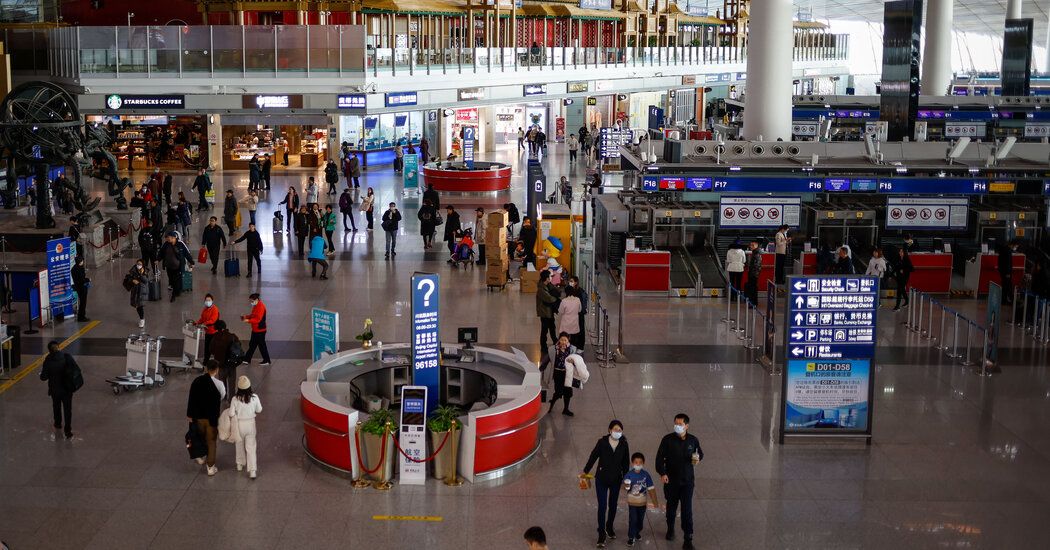Since China reopened its borders in 2023 after three years of Covid isolation, domestic travel has flourished and high-speed rail has become increasingly popular. But international travel in and out of the country is lagging and flight capacity remains just one-third of pre-pandemic levels.
There is a lot at stake in economic terms. Before the pandemic, Chinese travelers were the world's biggest spenders, accounting for 20 percent of global tourism spending, according to the United Nations World Tourism Organization.
Last year, Chinese authorities tried to stimulate more inbound travel. Among the changes: China either waived travel visas or agreed to extend the duration of visa-free travel for visitors from eight countries, including Germany and France.
The main factor holding back international travel by Chinese will continue to be China's economy. Growth has recovered from the pandemic, but the weight of a severe housing crisis has hit consumer spending and confidence within China. And global geopolitical tensions remain a wild card. China is involved in trade disputes with the United States and Europe, countries where many major multinational companies are located. When they think twice about doing business in China, travel suffers.
Here's what you need to know about the state of China's travel economy.
Travel to China has almost stopped due to the pandemic. It will not fully recover until 2025.
During the pandemic, China enforced some of the strictest travel rules in the world. Foreign travelers who managed to enter the country sometimes had to quarantine at their own expense for up to two months.
In December, international flight capacity (essentially the number of seats available on flights to and from China) was just 62 percent of what it was in December 2019, according to OAG, a flight data analytics firm. . But domestic travel has increased, and the number of those travelers exceeds pre-pandemic levels by almost 10 percent.
At the beginning of last year, there were only about 500 international flights each week in China, according to the Civil Aviation Administration of China, the aviation regulator. There are now about 4,600, and that number is expected to rise to 6,000 by the end of the year, about 80 percent of pre-pandemic levels.
A big test will come next month during the spring festival around the Lunar New Year, normally a period of intense travel when millions of workers travel to their hometowns. Chinese airlines will schedule an additional 2,500 international flights to accommodate spring festival visits, China's aviation regulator said last week.
China's transportation officials said they expected 480 million train trips to be made during a 40-day travel surge around the spring festival in the weeks before and after the Lunar New Year, an increase of nearly 40 percent. compared to last year.
High-speed rail has become a more popular way to travel within the country. China State Railway Group, the national railway operator, said train trips surpassed 20 million at the start of the Golden Week holiday in October, a record high, and the average daily number of passenger trips throughout the year exceeded the 10 million.
Most analysts said they believed a full recovery in international travel would not occur until 2025.
In a January research note, economists at Nomura, a Japanese bank, said the pace of the sector's recovery would largely be determined by how much Chinese travelers were willing to spend. Pandemic-era issues, such as delays in issuing visas and passports that lasted until 2023, have been addressed.
“While supply-side constraints have eased, demand-side restraints are now beginning to take effect, and considerable obstacles remain to China's outbound tourism recovery in 2024 and possibly 2025,” the economists at Nomura.
Applying for a visa and visiting China is a little less complicated.
In December, China began allowing visitors from France, Germany, Italy, Spain, Malaysia and the Netherlands to travel for 15 days without visas, a change it said would last until November 2024. China's National Immigration Administration China said 147,000 visas had been granted in the first six and a half weeks of the program. China also reached agreements to make visa-free travel more accessible for tourists from Thailand and Singapore.
For Americans, visa applicants will no longer need to submit documents such as hotel reservation records, an itinerary, or an invitation letter. Authorities have also reduced all visa application fees by 25 percent until the end of the year.
It has also become easier for foreigners to pay for things when they visit China. Last July, major payment platforms WeChat Pay and Alipay said they would support foreign credit cards and allow visitors to pay like locals. China has moved away from paper money and coins, a trend that accelerated during the pandemic.
Flights between China and the United States have slowly been restored. Before the pandemic, there were more than 300 weekly flights between the two countries. That figure was 36 a week in September and has gradually increased. In November, the countries agreed to increase flights to 70 per week.
Geopolitical tensions and reluctant Chinese travelers could derail the sector's recovery.
The strained relationship between China and the United States will continue to lurk in the background of international travel to China.
The US State Department maintains a “Level 3” travel alert on China, warning Americans to “reconsider travel” to the country due to the “risk of wrongful detention,” among other reasons.
China's Foreign Ministry has its own travel advisory, warning that travelers to the United States have been “harassed and interrogated” at the border with “various excuses” and that Chinese nationals have been arbitrarily arrested and prosecuted. .
The changing tastes and expendable incomes of Chinese travelers could determine how the travel economy recovery plays out.
“As Chinese households become more price-sensitive and rational, domestic tourism is more preferred as it typically requires less time and money,” said Ying Zhang of the Economist Intelligence Unit, a research firm.










